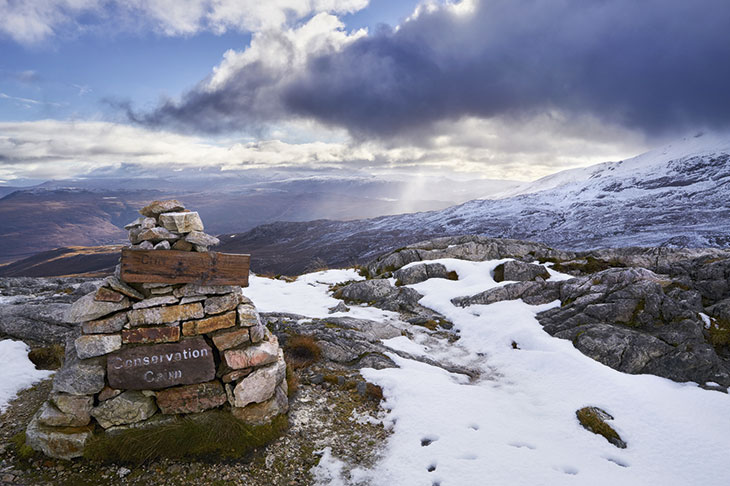There are piles of stones and then there are piles of stones. Anyone can place one rock upon another, but it takes a special endeavour to get the Ordnance Survey to take notice. Once a clutch of cartographers formally recognise a cairn, it will stay mapped for centuries, if not millennia. Wander around Britain’s fells, moors and coastline and you’ll find all manner of rock piles punctuating the landscape. Often some 5,000 years old, these are our island’s most ancient standing constructions.
Although they might look similar, cairns are not all the same. Summit cairns, for instance, indicate the precise pinnacles of hills. Many originate from the tradition, still known in Scotland and the West Country, of carrying a stone from foot to brow and depositing it as a pious relic. An anonymous workforce has produced some remarkable engineering: the cairn on Thornthwaite Crag in Cumbria, for instance, is 14 feet high. But sometimes people get carried away: the summit plinth of Snowdon is a monument of misplaced enthusiasm.
There are also route-marking cairns, designed to guide walkers in driving rain or in fog. Where there’s mostly turf and soil underfoot, the signal is clear, but when the path and landscape themselves are rocky, it can take a keen eye to identify the manmade pile. One thing you wouldn’t want to do is mix up a route-marking cairn with a warning cairn — a rock heap that alerts you to the fact that you’re about to saunter off a cliff or roll into a ravine. It’s good to be told about where there is or is not solid ground.
The last type of cairn is the memorial one. Many of those on Dartmoor are Neolithic burial markers. They are not always sombre: Showery Tor, a three-metre ring cairn overlooking Bodmin Moor, looks like the creation of a giant toddler.








Comments
Join the debate for just £1 a month
Be part of the conversation with other Spectator readers by getting your first three months for £3.
UNLOCK ACCESS Just £1 a monthAlready a subscriber? Log in